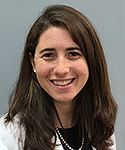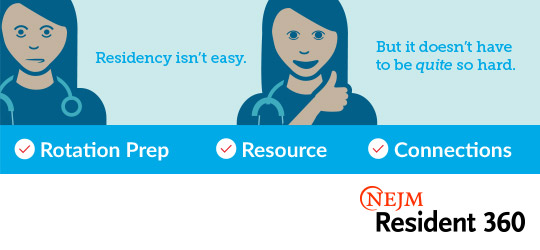March 5th, 2021
The Season of the Second Year
Stephanie Braunthal, DO
Chief year has taught me that, although residents progress through training linearly, the educational year itself is cyclical, with predictable “seasons” that are marked by specific events and focus on different populations within the residency body. With the completion of intern orientation, the fellowship match, and residency recruitment, there is a palpable shift to the progress and futures of members of the PGY-2 class. Filled with the planning of leadership retreats, selection of future chief residents, and preparation for the imminent fellowship and job application deadlines, I have deemed this time of year the “Season of the Second Year.”
 Second years are the proverbial middle children of the residency program. Already onboarded and not yet needing post-graduate placement, they often feel overlooked. Yet in reality, PGY-2 is one of the most challenging and transformational years in internal medicine residency. With the change of a calendar date, residents suddenly gain significantly more autonomy, lose the security of having a senior to help with clinical reasoning and writing orders, and, in many programs, shift their responsibilities from being a task manager to being a supervisor. In the midst of this huge clinical transition, they watch their third year peers going through the fellowship match and job processes, only to realize that there is a limited time to define themselves within the program and to make crucial decisions about their own career trajectories. From the fear of being a senior on nights by myself, to the anxiety of not yet having chosen a specialty, to the insecurity of comparing my productivity and qualifications to those of my peers, I remember these feelings vividly.
Second years are the proverbial middle children of the residency program. Already onboarded and not yet needing post-graduate placement, they often feel overlooked. Yet in reality, PGY-2 is one of the most challenging and transformational years in internal medicine residency. With the change of a calendar date, residents suddenly gain significantly more autonomy, lose the security of having a senior to help with clinical reasoning and writing orders, and, in many programs, shift their responsibilities from being a task manager to being a supervisor. In the midst of this huge clinical transition, they watch their third year peers going through the fellowship match and job processes, only to realize that there is a limited time to define themselves within the program and to make crucial decisions about their own career trajectories. From the fear of being a senior on nights by myself, to the anxiety of not yet having chosen a specialty, to the insecurity of comparing my productivity and qualifications to those of my peers, I remember these feelings vividly.
As it has with so many aspects of medical education, the pandemic has made the experience of being a second year significantly more difficult. Between intermittent clinic and consult closures, the need to pull residents for redeployment, and some residents missing rotations for COVID-19-related medical leave themselves, this class has had less access to electives that would otherwise help them evaluate different specialties, establish in-person mentorship, and be evaluated clinically by the faculty who will write their letters of recommendation. Furthermore, as all of us have experienced, they are unable to access the people and activities that help relieve stress outside of residency, and many have suffered significant loss from the virus itself.
The way that this year’s second year class has managed to find opportunities amidst the aforementioned limitations speaks to their resilience and adaptability. However, the inequities of their access to clinical experiences and mentorship due to the pandemic has made me question whether the timeline and expectations prior to applying to fellowship need to be adjusted to allow for residents to have the opportunity to optimize their clinical growth before solidifying and propelling their career. Even under normal circumstances, when residents focus too much on research or other projects that they take on to improve their CVs, their clinical performance sometimes suffers. Further, if they feel the pressure to commit to a specialty so early in residency, they may miss out on the realization that they are better suited for something else.
 Moving back the timeline for fellowship applications by even a few months would not only relieve stress on the individual residents, it might also have widespread program benefits. If third-year residents interview later in the year, they will be more present to mentor and teach the interns in their early months; by the time seniors are interviewing, the second-years will have enough experience to easily cover the teams. Further, it could alleviate the need for program leadership to focus simultaneously on onboarding new interns and ensuring all fellowship documentation is appropriately submitted, both heavily administrative processes with strict deadlines in June and July.
Moving back the timeline for fellowship applications by even a few months would not only relieve stress on the individual residents, it might also have widespread program benefits. If third-year residents interview later in the year, they will be more present to mentor and teach the interns in their early months; by the time seniors are interviewing, the second-years will have enough experience to easily cover the teams. Further, it could alleviate the need for program leadership to focus simultaneously on onboarding new interns and ensuring all fellowship documentation is appropriately submitted, both heavily administrative processes with strict deadlines in June and July.
Creating such a substantial change in the seasonal pattern of the residency year would require buy in from myriad stakeholders across multiple specialties and within the graduate medical education community at large. If considered, it may take years to achieve. In the meantime, we in program leadership must focus on measures that help residents flourish within the current framework:
- Provide structured advisor, mentor, and coaching programs that prepare residents for crucial points on the residency timeline for skills acquisition and career decisions.
- Ensure broad exposure to clinical rotations early in training, with buffered time for the resident to explore electives.
- Allow interns to practice skills that will be unique to being a senior resident. This can be through embedded education and graded autonomy on the floor, workshops, or retreats with opportunities for reflection and goal-setting.
- Encourage fellowship directors to be transparent about their expectations of what constitutes a strong applicant. This will help residents prioritize what they should be working on outside of their clinical responsibilities.
- Anticipate that the pandemic is not over, and that the closures we previously faced may recur. Work with subspecialty education coordinators to find creative ways to achieve alternative education and mentorship if the residents cannot rotate with their fellows and faculty in clinic or consults directly.
- If your jeopardy pool can afford it, try to minimize calling in residents off of electives when they are rotating in their desired specialty.
 The Season of the Second Year is as invaluable for the program as much as it is for residents. As we evaluate the clinical and academic progress of our trainees at such a pivotal point, we are forced to reflect on our own strengths and weaknesses that may have engendered or hindered their success. Further, the yearly process of selecting new chief residents allows us to focus on the future of the program, as well as what qualities we seek in our leadership.
The Season of the Second Year is as invaluable for the program as much as it is for residents. As we evaluate the clinical and academic progress of our trainees at such a pivotal point, we are forced to reflect on our own strengths and weaknesses that may have engendered or hindered their success. Further, the yearly process of selecting new chief residents allows us to focus on the future of the program, as well as what qualities we seek in our leadership.
With that, I open the discussion to the readers. How did you feel when you were second years? What measures did your program take to help you succeed, or that you wish had been offered? Do you think it would be feasible or useful to shift the seasons within our academic calendar?




Didn’t realize the second year IM fellowship match comes so early, and can see how it would be disruptive both on the front and back end! General surgery fellowship matches are spread out from mid-fourth year though early-fifth year. It’s actually helpful these are spread out so the entire chief class is not out interviewing all at once, but the earliest matches have similar downsides. You essentially have to ready your application by the end of third year!